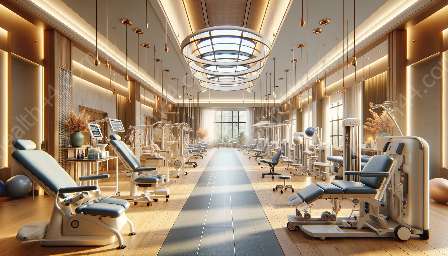Respiratory devices play a crucial role in the field of medical devices and equipment, particularly in the context of rehabilitation. In this comprehensive guide, we will explore the different types of respiratory devices, their applications in rehabilitation equipment, and their impact on the healthcare industry.
The Role of Respiratory Devices in Healthcare
Respiratory devices are designed to aid individuals with breathing disorders, lung diseases, or other conditions that affect their respiratory function. These devices are also widely used in rehabilitation settings to help patients regain lung function, improve breathing, and enhance their overall respiratory health.
There are various types of respiratory devices, each serving specific functions and catering to different patient needs. Let's delve into the different categories of respiratory devices and their applications in rehabilitation equipment.
Types of Respiratory Devices
1. Oxygen Therapy Devices
Oxygen therapy devices are essential in delivering supplemental oxygen to patients with respiratory conditions such as chronic obstructive pulmonary disease (COPD), asthma, and pneumonia. These devices include oxygen concentrators, oxygen cylinders, and portable oxygen tanks, providing patients with the necessary oxygen levels to support their breathing.
2. Positive Airway Pressure (PAP) Devices
PAP devices, including continuous positive airway pressure (CPAP) and bilevel positive airway pressure (BiPAP) machines, are commonly used to treat obstructive sleep apnea, a condition that causes interrupted breathing during sleep. These devices help keep the airways open, promoting uninterrupted breathing and improving sleep quality.
3. Nebulizers
Nebulizers are respiratory devices that convert liquid medication into a fine mist that can be inhaled into the lungs. These devices are vital for delivering medication directly to the lungs, making them a crucial part of respiratory therapy for conditions such as asthma, chronic bronchitis, and cystic fibrosis.
4. Ventilators
Ventilators, also known as mechanical ventilators or respirators, are essential in providing life support for patients who are unable to breathe on their own. These devices are widely used in intensive care units (ICUs) and emergency medical settings to assist patients with acute respiratory failure or other critical conditions.
Respiratory Devices in Rehabilitation Equipment
Respiratory devices are integrated into various rehabilitation equipment to facilitate patients' recovery and improve their respiratory function. These devices are used to support patients undergoing pulmonary rehabilitation, post-operative care, and recovery from respiratory conditions or surgeries.
One common application of respiratory devices in rehabilitation equipment is the incorporation of pulmonary exercise equipment, such as breathing trainers and incentive spirometers, to help patients strengthen their respiratory muscles, expand lung capacity, and enhance breathing efficiency.
Additionally, ventilators and oxygen therapy devices are integral components of rehabilitation equipment, supporting patients with respiratory deficiencies during their recovery process. The integration of respiratory devices in rehabilitation equipment enables healthcare professionals to tailor treatment plans and provide personalized care to patients based on their respiratory needs.
Impact of Respiratory Devices on Healthcare
The advancements in respiratory devices have significantly impacted the healthcare industry, improving the quality of care for patients with respiratory conditions and enhancing rehabilitation outcomes. These devices have paved the way for innovative treatment approaches, allowing healthcare providers to deliver targeted respiratory therapies and support patients in optimizing their lung health.
Furthermore, the integration of respiratory devices within rehabilitation equipment has contributed to the multidisciplinary approach to patient care, emphasizing the importance of respiratory rehabilitation as an integral part of overall recovery and well-being.
Conclusion
Respiratory devices are indispensable tools in the realm of medical devices and equipment, playing a vital role in rehabilitation and healthcare. Their diverse applications, from assisting individuals with respiratory disorders to supporting patient recovery, underscore their significance in improving respiratory function and enhancing overall well-being. Understanding the types and impact of respiratory devices is crucial for healthcare professionals, rehabilitation specialists, and individuals seeking comprehensive respiratory care.


